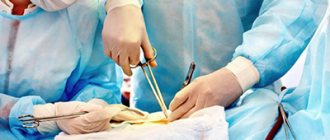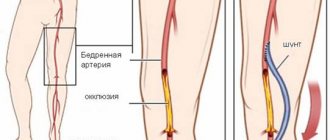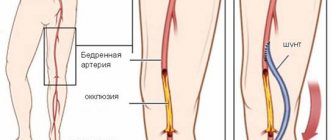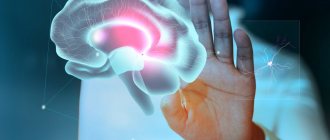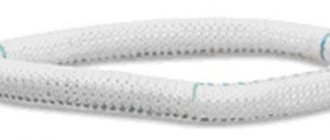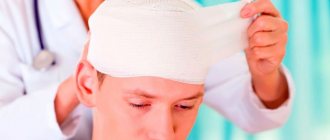Treatment
Treatment with coronary artery bypass grafting is carried out by a cardiologist. This operation is quite complex and requires serious skills and abilities. In addition, the procedure requires a lot of effort on the part of the patient, because the recovery stage lasts several months.
The recovery stage after any surgical intervention includes a whole range of procedures aimed at maintaining the vital functions of the body and stabilizing the human condition. To do this, the patient is given drug therapy, the main objective of which is to prevent inflammation and quickly restore cardiac activity.
Why do you need therapeutic exercises after bypass surgery? For a speedy recovery, as well as to improve the condition of the heart muscle in the postoperative period, proper and effective rehabilitation of the patient, which includes therapeutic breathing and exercise therapy, is of great importance.
Health-improving physical education after coronary artery bypass surgery allows you to:
- include in the work of all circulatory organs;
- gradually increase the load on the myocardium, so that the body gets used to it;
- ensure stable operation of all circulatory organs, including extracardiac ones - this can significantly reduce the load on the heart muscle;
- prevent the development of inflammatory processes in the chest;
- restore metabolic processes in the myocardium;
- produce a general strengthening of the muscular system of the heart for optimal myocardial contraction;
- reduce the number of complications after surgery;
- quickly restore the overall immunity and strength of the body.
In addition, therapeutic exercises after CABG can reduce the risk of developing thrombophlebitis of the veins of the lower extremities, infiltrates, promotes the healing of scars and the normal fusion of tissues damaged during surgery.
Recovery after bypass surgery
Recovery after coronary artery bypass surgery should be carried out under the supervision of a specialist. This is important not only because the patient needs to quickly normalize his condition, but also because CABG eliminates only the consequences of cardiac dysfunction. The underlying cause, for example, atherosclerotic vascular lesions, remains. Coronary artery bypass surgery is a serious trauma for the body; it leads to many responses that can become pathological.
Recovery goals
The patient and the specialist face a number of tasks, the success of which determines the effectiveness of the operation.
These include:
- prevent the development of complications;
- resume heart function in full;
- stimulation of regenerative processes in damaged areas;
- slow down the progression of atherosclerotic and other pathological processes in the myocardium;
- adapt the patient to psychological and physical stress;
- to form skills that are relevant for new living conditions: household, social, labor.
It is considered that the set goals have been achieved if the patient returns to a lifestyle relevant to a healthy person.
Recovery after bypass surgery includes the following areas:
- patient care in the first days;
- drug therapy;
- systematic monitoring of condition dynamics;
- attitude towards a healthy lifestyle and giving up bad habits;
- physical rehabilitation;
- breathing exercises;
- mental rehabilitation;
- physiotherapeutic procedures and sanatorium-resort treatment.
8
24/7
Recovery activities in the first days
After the operation, the patient is transferred to the intensive care unit, where he is under the control of devices and medical personnel. At this time, a number of examinations are carried out:
- general blood analysis;
- X-ray;
- electrocardiography.
Recovery after bypass surgery during this period requires the patient to stay warm, so he is wrapped in a warm blanket. On the first day, the temperature may rise - this is a variant of the norm and a manifestation of the body’s protective functions. Also characteristic of the recovery state is increased sweating.
The patient spends 1-1.5 weeks in the hospital. A week after CABG, the sutures are removed from the chest and leg, if the vein was taken from there. It takes about 6 weeks for the sternum to heal. During this period, high physical activity is prohibited. Using a special bandage will help speed up recovery after bypass surgery. Antibacterial drugs, painkillers and sedatives are prescribed.
It is necessary to perform breathing exercises - a specialist will teach them before the operation. The easiest way to develop your lungs is to inflate balloons. However, there are special techniques that are used for recovery after coronary artery bypass surgery.
To prevent congestion, vibration massage is performed over the lung area with gentle tapping movements.
Despite bed rest, it is necessary to move - change body position. Once the doctor gives permission, you can turn on your side. Physical activity is increased gradually: first, you are allowed to sit on a chair, then move around the ward, along the corridor. After this, the patient tries to walk up the stairs. Before discharge, he takes walks in the fresh air.
Further rehabilitation
Wearing a bandage and compression stockings will speed up recovery after cardiac bypass surgery. You can buy them at an orthopedic store.
Water procedures are not prohibited, but washing is only allowed in the shower, and so that a direct stream of water does not fall on the wound area. Swimming and visiting the pool are allowed only after the sternum has healed.
Drug treatment is based on taking drugs such as:
- antiplatelet agents;
- ACE inhibitors;
- beta blockers;
- statins.
Antiplatelet agents are needed to thin the blood. These are medications that patients with coronary artery disease must take for life. The most common drug is aspirin.
Beta blockers reduce the load on the heart and normalize heart rate and blood pressure. Their use is relevant for hypertension, tachyarrhythmia, and heart failure.
Statins are characterized by an anti-inflammatory effect.
Physical recovery after bypass surgery begins almost immediately. The very next day the patient sits down, and on the second day he gets out of bed. Gymnastics and massage are necessary.
Recommended types of sports activity are walking, walking in the fresh air, and subsequently swimming. Experts recommend using cardio equipment, cycling, and walking up the stairs.
8
24/7
The recovery period after bypass surgery does not prohibit sexual activity. However, you should choose positions that will not put pressure on the chest. But you will have to give up driving a car for a month. Doctors do not advise traveling during the first few months. If there is a need to leave, then before departure it is mandatory to undergo a cardiological examination and consult a specialist.
Mental recovery after bypass surgery is an integral part of rehabilitation. Psychoemotional disorders are often a consequence of complex surgery. Patients experience increased anxiety and doubts about the possibility of improving their well-being. Psychosomatics works in such a way that this uncertainty flows into a deterioration in physical condition: headaches and dizziness appear. To avoid such situations, it is necessary to work with a psychotherapist. New attitudes are formed, and if necessary, drug treatment is used - sedatives. Physiotherapy and massage are also effective.
Lifestyle
Smoking after CABG is strictly prohibited. Nicotine leads to increased blood clotting, leads to vasospasm, impairs the transport of oxygen to tissues and the conduction of impulses in the myocardium.
Recovery after heart bypass surgery includes physiotherapy: electrosleep, magnetic therapy, laser, electrophoresis.
It is highly recommended, if possible, to undergo recovery after bypass surgery in a specialized sanatorium. The advantages in this case are numerous: constant monitoring combined with a well-designed diet and the implementation of dosed exercises under the supervision of a specialist.
Possible complications
The patient should pay great attention to changes in his well-being. You should contact a specialist immediately in the following cases:
- changes indicating the development of an inflammatory process in the suture area: hyperemia, local increase in temperature, pain, discharge from the wound;
- general weakness;
- difficulty breathing;
- weight gain, swelling;
- tachycardia;
- chest pain.
Recovery after heart bypass surgery, both in the hospital and at home, should be under the supervision of a doctor, as there is a risk of complications. Possible consequences include:
- arrhythmias;
- bleeding;
- heart attack;
- stroke;
- thrombosis;
- penetration of infection into the wound;
- renal failure;
- chronic pain in the incision area.
Prevention
One of the key factors in both primary and secondary prevention of heart pathologies is proper nutrition. Recovery after bypass surgery involves following a strict diet.
Considering the danger of developing atherosclerosis and ischemic heart disease from dietary factors, it is necessary to highlight the following:
- high calorie foods leading to obesity;
- lack of polyunsaturated acids, which are needed to normalize cholesterol metabolism;
- foods rich in cholesterol;
- fiber deficiency;
- excessive salt intake;
- excess animal proteins that impair vascular permeability and negatively affect lipid metabolism and blood clotting;
- deficiency of substances necessary for the body: magnesium, potassium, zinc, iodine, vitamins PP, A, ascorbic acid, B6.
First of all, it is necessary to reduce the calorie intake. It should be 2400-2600 kcal.
The diet should include 70-90 g of protein, 80 g of fat, 300-350 g of carbohydrates.
5-6 small meals per day are recommended. Food should be at normal temperature and not over-salted. The permitted volume of liquid is 1.2-1.5 liters per day.
8
24/7
Experts advise including the following dishes on the menu:
- soups based on vegetable broth with well-cooked cereals;
- lean meats and poultry;
- seafood;
- dairy products;
- whole grains;
- vegetables and fruits;
- fresh juices;
- almonds and walnuts.
Patients with diabetes are at high risk of developing complications. These people are at risk, which requires special attention from medical personnel. It is important to provide the body with proper rest - sleep at least 8 hours, and avoid emotional turmoil.
The prognosis for patients after surgery is favorable - life expectancy can be increased by 10-15 years.
After cardiac bypass surgery has been performed, recovery must proceed in strict accordance with these recommendations; you cannot rely only on the operation performed. The professionalism of the doctor also plays a big role.
Training rules
Rehabilitation, including physical activities, after heart surgery are prescribed within a few days after the procedure. First, this process consists of simplified minimal physical tasks aimed at normalizing the patient’s proper breathing, as well as at fully restoring the body’s strength.
There are a number of rules required for the correct implementation of physical activities after coronary artery bypass surgery:
- any, even minimal exercises after surgery should be performed only after the advice of a specialist, who selects the complex individually for each patient, based on his condition and the complexity of the operation;
- the dosage of the load, as well as a set of tasks, is prescribed by the doctor, the training should take place under his supervision;
- classes should not be of a training nature and should not place a high load on the muscular system of the body;
- tasks should be performed in minimal quantities, gradually increasing the load on the body;
- performing health-improving physical education should be done regularly (exercises should be done periodically) for the most effective results;
- It is recommended to do gymnastics in the morning 20-30 minutes before meals or 1-2 hours before bedtime;
- when performing exercises, it is necessary to carefully and regularly monitor the patient’s pulse, blood pressure and heart rate;
- if even a minimal deterioration in the patient’s condition occurs, you should stop exercising and check the functioning of the body systems;
- Gymnastic movements should be carried out with parallel drug treatment and diet therapy prescribed by the attending physician.
The course of rehabilitation after heart surgery
The recovery period begins immediately after surgery. Of course, in the first days, any active actions are impossible, so the very first exercises after heart surgery are breathing. They are mandatory as they prevent congestion in the lungs and help normalize breathing
Rehabilitation after surgery, at this stage, is performed both by the patient independently (balloon inflation, breathing exercises) and by medical personnel (chest vibration massage). Also, as part of rehabilitation, the patient is advised to regularly change position in bed. After a few days you can roll over onto your side. After a few more days, physical activity increases gradually, taking into account how you feel. But by the end of the first stage of rehabilitation, that is, by discharge from the hospital, a person should already be able to move independently, climb stairs and take short walks on the street.
The second period of recovery after heart surgery begins after discharge and lasts about two months. At this time, a person must carefully follow a diet, perform exercise therapy, monitor the condition of the suture and the functioning of the heart.
During the same period, sanatorium-resort treatment is indicated. It is necessary both after replacing the mitral-aortic valve and after vascular bypass surgery. As a rule, resort rehabilitation is prescribed from the 10th day, but in each specific case its own terms are set.
Contraindications
Physical education after any operation should be carried out in a particularly gentle manner, but, like all medical procedures, physical education has a number of contraindications that limit the circle of people allowed to perform tasks. The main contraindications for manipulations after coronary artery bypass grafting are:
- the first 3 days after the manipulation there is a high risk of suture divergence;
- serious condition of the patient;
- stable deterioration of the patient’s condition after several exercises;
- early complications that arose after the operation.
Carrying out physical therapy is possible only after eliminating malfunctions in the functioning of systems and organs.
Treatment in a sanatorium
Rehabilitation after heart surgery is impossible without taking a course in a sanatorium. It is aimed at stabilizing the patient’s general condition, minimizing the risk of complications, restoring working capacity, improving the functioning of the cardiovascular and respiratory systems, and restoring the psycho-emotional state.
As part of sanatorium rehabilitation, various procedures are carried out - massage, exercise therapy and gymnastics, therapeutic baths, aromatherapy, inhalations and so on. The course is developed depending on the timing of its completion.
Individual and group psychotherapy is mandatory, since heart surgery is a consequence of serious, high-risk diseases, which means that most patients have a fear of death and a depressed state. Exercises alone and procedures after surgical treatment will not help, since much of the recovery depends on the psycho-emotional state of the person.
Breathing exercises
This type of physical education is quite important in the healing process after surgery. Breathing exercises, as a type of health therapy, help normalize metabolic processes in the heart, which brings sufficient saturation of the blood with oxygen and leads to the fastest healing. In addition, therapeutic breathing movements stabilize the electrolytic balance of the heart and help normalize the rhythm.
Breathing exercises can be performed both in a supine position, when a person is in the early postoperative period, and in a standing position, in a later period.
The main tasks for performing breathing exercises after surgery include:
- close your right nostril with your finger, take a maximum inhalation through your left nostril, then close your left nostril and make a gradual, full exhalation through your right nostril; repeat the exercise in reverse order;
- if it is possible to raise your limbs: slowly raise both arms up, while taking a deep breath, then gradually lower your arms, quietly exhaling air; repeat the exercise 5-7 times;
- lying on your back, take a deep breath and hold your breath for a few seconds, then exhale slowly; repeat this task 5-7 times;
- lying on your back, legs straight, arms along the body; slowly take a deep breath and bend your legs at the knee joints, performing a sliding movement with your feet, then exhale deeply, at this time taking the original position of the torso; repeat the task 5-10 times.
If during breathing exercises the patient feels dizziness or nausea, or blurred vision, the exercise should be stopped. If the exercise goes well, then the set of exercises will help the heart return to normal quickly after surgery, as well as restore normal blood flow and oxygen exchange in the tissues.
Memo to the patient during coronary artery bypass surgery
We consider it necessary, before coronary bypass surgery, to present you with an abbreviated version of the manual for a patient who is about to undergo coronary bypass surgery. It gives very important advice on many issues regarding your upcoming operation.
The manual briefly presents tips and tricks, the use of which will provide you with a calmer and more effective passage of the postoperative period, and will help you avoid many mistakes and incorrect actions that are fraught with complications. You will also need this manual later after the operation to improve the long-term results of the operation.
With wishes for a speedy recovery!
To train the respiratory muscles, along with the use of breathing exercises, various breathing simulators can be used, as well as improvised means, such as a tube, a balloon, a rubber bladder.
When using them, it is recommended to blow into a tube, inhale as deeply as possible, and exhale as long as possible, timing the exhalation time. During subsequent exercises, try to increase the exhalation time. In addition, breathing through a tube can be done in the following way: inhale in 3-4 small breaths, as if in portions, and exhale calmly evenly; or inhale evenly and deeply, and exhale in portions into a tube.
When using special simulators, you should consult with your doctor about the possibility of use, and if approved, follow the instructions included with this simulator.
One of the very important points in the preoperative period is the acquisition of abdominal breathing skills , which you will need in the early postoperative period for easier full breathing, improved gas exchange and good discharge of sputum from the lungs:
- I.p. – lying on the bed or sitting on a chair, one hand lies on the stomach, the other on the chest, the body is relaxed: take a calm breath through the nose, inflating the stomach, while the hand lying on the stomach rises, and the second one, on the chest, remains motionless .
- The duration of inhalation is 2–3 s. When you exhale through a half-open mouth, the stomach drops. The duration of exhalation is 4–5 s.
- After exhaling, there is no need to rush to inhale again, but should pause for about 3 seconds until the first desire to inhale appears.
- During one lesson, you need to perform from 5 to 10 repetitions, at least 4-5 approaches (times) per day. If you are a smoker, it is very important to stop smoking as soon as possible before surgery. Every day and even an hour before anesthesia that you spend without a cigarette will reduce the likelihood of lung problems that arise after surgery. Quitting smoking will significantly improve the long-term results of the operation: coronary bypass grafts formed during the operation will work for many years and will relieve you of heart pain and other problems with your health. Remember that if you continue to smoke, you may significantly reduce the effectiveness of your surgery.
If your operation is scheduled for the next morning, you will not be allowed to drink or eat after 20:00, if in the afternoon, you will be allowed to eat some liquid food early on the morning of the operation. On the day of surgery, be sure to take all medications prescribed by your doctor and drink them with the minimum required amount of water.
Another serious complication in the postoperative period is suppuration of the postoperative wound. To prevent this complication, you need to wash with soap in the evening (it reduces the number of bacteria on the skin, thereby reducing the risk of infection).
It is necessary to remove hair on the day of surgery from where the incisions are planned (from the chest, from the legs from the feet to the groin and from the groin area), using electrolysis or using depilatories. When using depilatories, to avoid an allergic reaction, apply a small amount of cream to the inside of the forearm the night before; if there is no redness (allergic reaction), you can apply it to the desired area. Avoid shaving the skin in the area of surgery, as shaving causes microdamage to the skin and the possible formation of pustules - micropustules, which is a very good environment for the development of bacteria.
Before the operation, you will definitely need to ensure that you have a postoperative bandage (corset) for the chest and, possibly, elastic bandages for bandaging the legs. The corset (bandage) is designed to prevent the divergence of the two halves of the cut sternum, and elastic bandages are designed to cover the wound of the leg after taking your vein from it, which will serve you to supply blood from the aorta to the muscle of your heart. Place the corset and elastic bandages in your personal belongings so that you can easily get them out and start using them as soon as you are transferred from the intensive care unit to the recovery room.
Before the operation begins, doctors will connect special tubes (catheters) to you. This is necessary to continuously monitor your vital signs during and immediately after surgery. Catheters are inserted into arteries and veins after you fall asleep.
After operation. When you wake up after surgery, you will find a breathing tube in your mouth connected to a respirator. Under no circumstances should you grab it or try to pull it out. A respirator will help you breathe until you can do it on your own. Once the breathing tube is removed, you will be able to breathe deeply and
cough to remove mucus from the lungs.
There is no need to be afraid of coughing; thanks to it, accumulated phlegm is removed from the lungs. But for normal healing of a postoperative wound, it is necessary to protect the sternum and shoulder girdle from excessive stress. Therefore, you need to cough correctly. Remember that when coughing, the post-operative bandage (corset) must be properly fastened to your chest.
When coughing, you need to clasp your shoulders with your hands and fix your chest, and perform coughing movements using your abdominal muscles, trying to keep your chest motionless. This is where belly breathing comes in handy. To properly support the chest when coughing, it is convenient to use a pillow, pressing it tightly to the chest, as if hugging it.
If there is no means at hand, you can fix the chest with your palms.
How to stand up correctly. After surgery, the process of getting out of bed is the most difficult and difficult for the body. Even walking during this period is an easier process. Therefore, you need to get up for the first time with the help of medical personnel. Remember that stress on the shoulder girdle when standing is unacceptable, as it may have a negative effect on the healing of the sternum. If you lean on your hands or pull yourself up with your hands when standing up, the sutures on the sternum may become loose, which can lead to a serious complication, i.e. divergence of the sternum.
Before getting up, do not forget to fasten your corset and follow certain rules. When rising, you need to roll onto your side and then lower your legs from the bed, using your upper torso and arms to try to sit up.
Don’t rush to get to your feet right away; first, try pressing your feet on the floor one at a time, as when walking, and only then get up. You cannot lean on your back with two elbows, turn on your side without lowering your legs to the floor.
How to walk correctly. After you gain confidence in your legs, and this happens quickly, you need to walk, but little by little, much less than before the operation. On the 1st day after surgery, it is better to only walk around the room.
If your condition is more stable the next day and you are able to sit up in a chair, you can walk around the room for a short distance. You will be transferred to an inpatient ward, where you will continue to be monitored.
In the inpatient department. In the department, your activity will increase every day. On the 1st day after transfer from the intensive care unit, it is better to walk around the ward. The next day you can go out into the corridor. Your task is to walk little by little, without any unpleasant sensations in the chest. For some this distance will be 5 m, for others it will be 50 m, but at one time it should not exceed 150 m. During the day you can walk from 1 to 15 times. Focus on your well-being. You should continue to do breathing exercises and belly breathing to stimulate coughing. Remember to keep a pillow nearby and use it when you cough. You need to continue the exercises you started in the intensive care unit for your arms, legs and chest.
Getting up from a chair: move to the edge of the chair, place your feet under you, try to stand up using your leg muscles.
Sitting: Sit up straight with both feet on the floor. Your knees should be level with your hips. Don't cross your legs.
Lifting objects from the floor: without bending at the waist, bend your knees, lowering your body vertically; your back should remain straight.
In order to prevent sternum divergence in the first 2–3 months, it is not recommended:
- in a lying position, place your hands behind your head;
- spread your arms in different directions;
- move your hands behind your back (in different positions);
- cross your arms in front of you;
- raise both arms up;
- perform exercises with both hands;
- move around the bed, leaning with both hands;
- in a lying position, raise your legs up;
- in a lying position, perform the “bicycle” exercise;
- bend the body forward, sideways, backward, and rotate the body;
- sleep on your stomach or side;
- pull up;
- perform push-ups (even from the railing).
Tips for breast corset:
- The corset is worn over underwear made of cotton fabric and does not irritate the postoperative seam. It is strictly not recommended to wear it on a naked body!
- The corset should be worn while lying on your back.
- The postoperative corset is worn around the clock for up to 3 months after surgery.
- A break from wearing a corset is a must. Unfasten the Velcro or hooks periodically for 15–20 minutes. Making sudden movements at such moments is strictly prohibited!
- Remember that the corset must be fastened tightly enough to keep the breastbone stationary and heal well. Take as deep a breath as possible, then fasten the corset tightly.
Physical exercise
Therapeutic gymnastics after bypass surgery is carried out both in the postoperative period, when the patient is in bed, and during the period of normalization of the body systems and restoration of the patient’s ability to get up.
An approximate set of exercises in a supine position:
Exercise therapy must be carried out in loose clothing that does not restrict breathing and movement. For best results, do 2-3 approaches throughout the day. Physical exercises should begin with the simplest tasks for the patient, gradually increasing the load as the muscles warm up.
- perform flexion and extension of the feet, 5-10 times for each leg;
- flexion and extension of the hands, 50-10 approaches for each;
- perform flexion and extension movements of the arms in the elbow joints, while touching the shoulders with the hands; perform 5-10 times.
- take a deep, slow breath in and out, raising your arms perpendicular to your body;
- bend your leg at the knee and then slowly lower it to its original position; repeat the exercise for the second leg. 5-10 reps.
- lying on your back, place your hands with your palms up, then take a slow breath and straighten your arms in different directions, simultaneously turning your feet outward, then return to the starting position, while exhaling deeply;
- move your legs bent at the knees randomly in different directions for 1-2 minutes;
- raise your hand and touch it to the leg bent at the knee, located on the same side of the body, then take the usual position; repeat the task for the second half of the body; quantity – 5-10 times for each half;
- lie down straight; As you inhale, stretch your arms in both directions, while turning your head to the right side, and as you exhale, return to the starting position. Next, complete the task by turning your head to the left; perform the movement 4-6 times;
- clench your hands into a fist and make quick circular movements with both hands for 30 seconds;
- bend your knees; carry out voluntary extension of the limbs at a free pace; execution time 30-60 seconds;
- tighten your gluteal muscles, then relax; repeat 5-10 times.
Exercises while sitting
These physical movements should be performed in parallel with breathing exercises. The lesson includes:
- Press your arms bent at the elbow joints to your shoulder, then smoothly spread your elbows in different directions, while taking a deep breath; gradually lowering your hands, exhale; repeat 5-10 times.
- Make circular movements with your arms, slowly raising and lowering them, perform the exercise for 30 seconds.
- Perform a circular movement of your arms, then hold your hands on your knees; make a gradual tilt of the torso towards the knees, then slowly take the starting position; repeat 4-5 times.
- Alternately raise your shoulders to your head, then lower them, do the exercise for 30 seconds.
- Gradually bend your leg and bring your knee to your chin, inhaling, then straighten it, exhaling; repeat 4-5 movements for each leg.
The main goal of therapeutic exercises is a targeted action on the restoration of the body. It is important to remember that all movements should be performed at a quiet pace and should not cause the patient a feeling of discomfort or heaviness. Only full and regular training with a gradual increase in load will have a positive effect and will contribute to adequate medical therapy.
Exercise therapy after heart surgery
As mentioned above, physical and gymnastic exercises are prescribed to the patient from the first days of the postoperative period; the entire course of exercises after heart surgery is divided into several stages:
- It begins 6 or 8 hours after the end of anesthesia, while still in the intensive care unit. Attempts at coughing, abdominal breathing, and static breathing exercises are indicated. After the first day, they begin to do exercises for the muscles of the neck and limbs (static). Special breathing is repeated at intervals of 30 minutes, muscle exercises at intervals of 2 hours. During the same period, massage (tapping) of the chest and part of the back is performed. On the second day after valve replacement or bypass surgery, the patient performs simple exercises—without lifting his feet from the bed, he bends his legs at the knees and hip joints. Arm flexion and abduction at the shoulder are shown. Breathing exercises are also performed, including inflating a ball or rubber toy. From day 4, exercise therapy includes movements for the arms and legs, transition from a lying position to a sitting position, and lowering the legs from the bed.
- From 7-15 days it is allowed to get out of bed; exercise therapy includes exercises performed in a standing position. From the 3rd week, exercises after cardiac surgery include walking - 15 minutes, 2 or 3 approaches per day. The movements are performed standing and sitting. It is necessary to ensure that the pulse does not exceed 100 beats/min. The program also includes massage.
- After discharge, it is mandatory to attend group exercise and gymnastics classes. Regardless of whether heart bypass surgery or valve replacement has been performed, walking is indicated. Gradually, the program includes light running and moderate physical activity, with a heart rate not exceeding 130 beats/min. This stage of recovery after surgery lasts from 2 to 3 months.
The entire course of exercise therapy, gymnastics and massage as part of recovery after heart surgery is aimed at maintaining the functioning of the respiratory system, restoring the functions of the cardiovascular system, and improving the general condition of the body.

